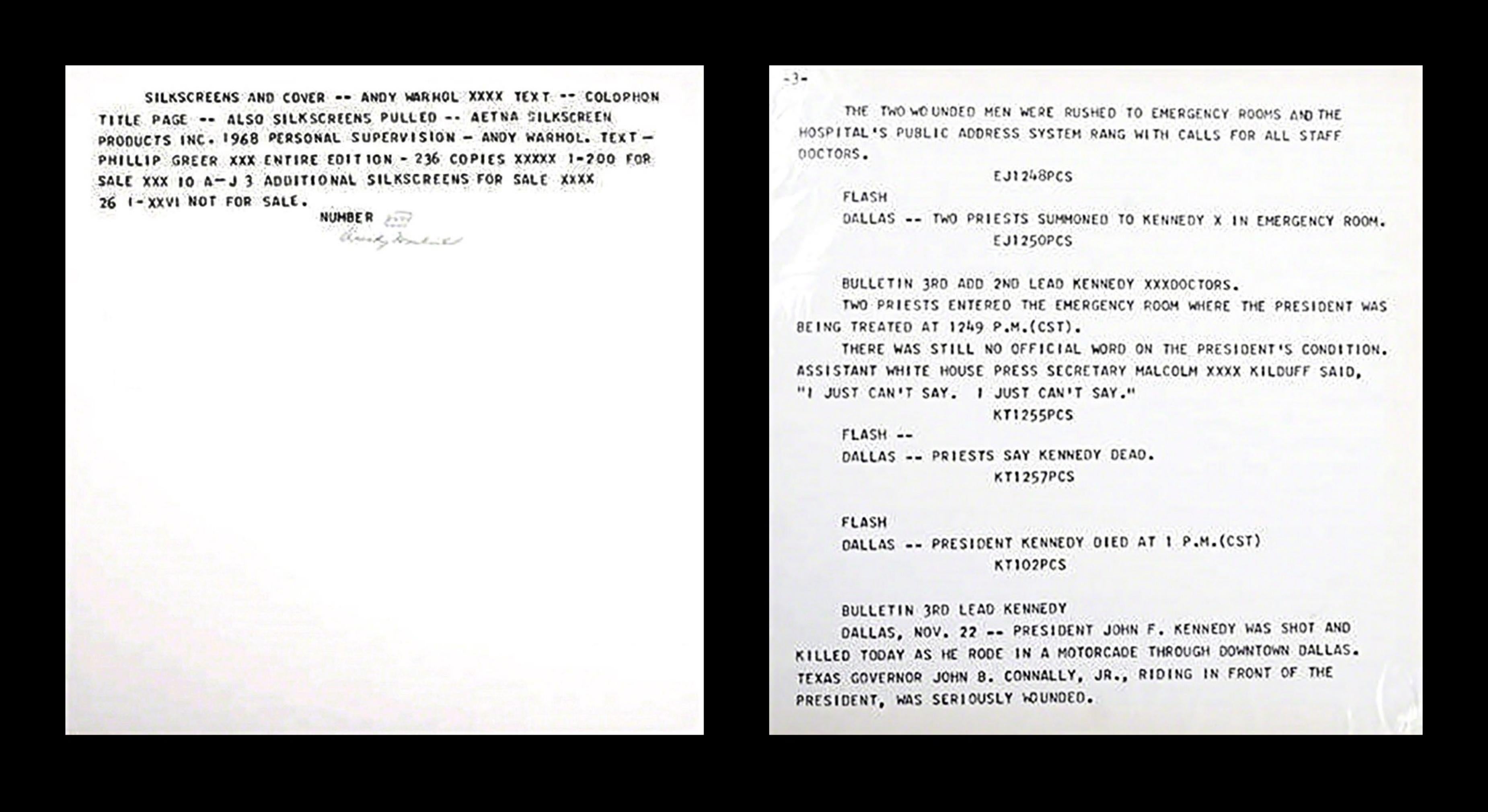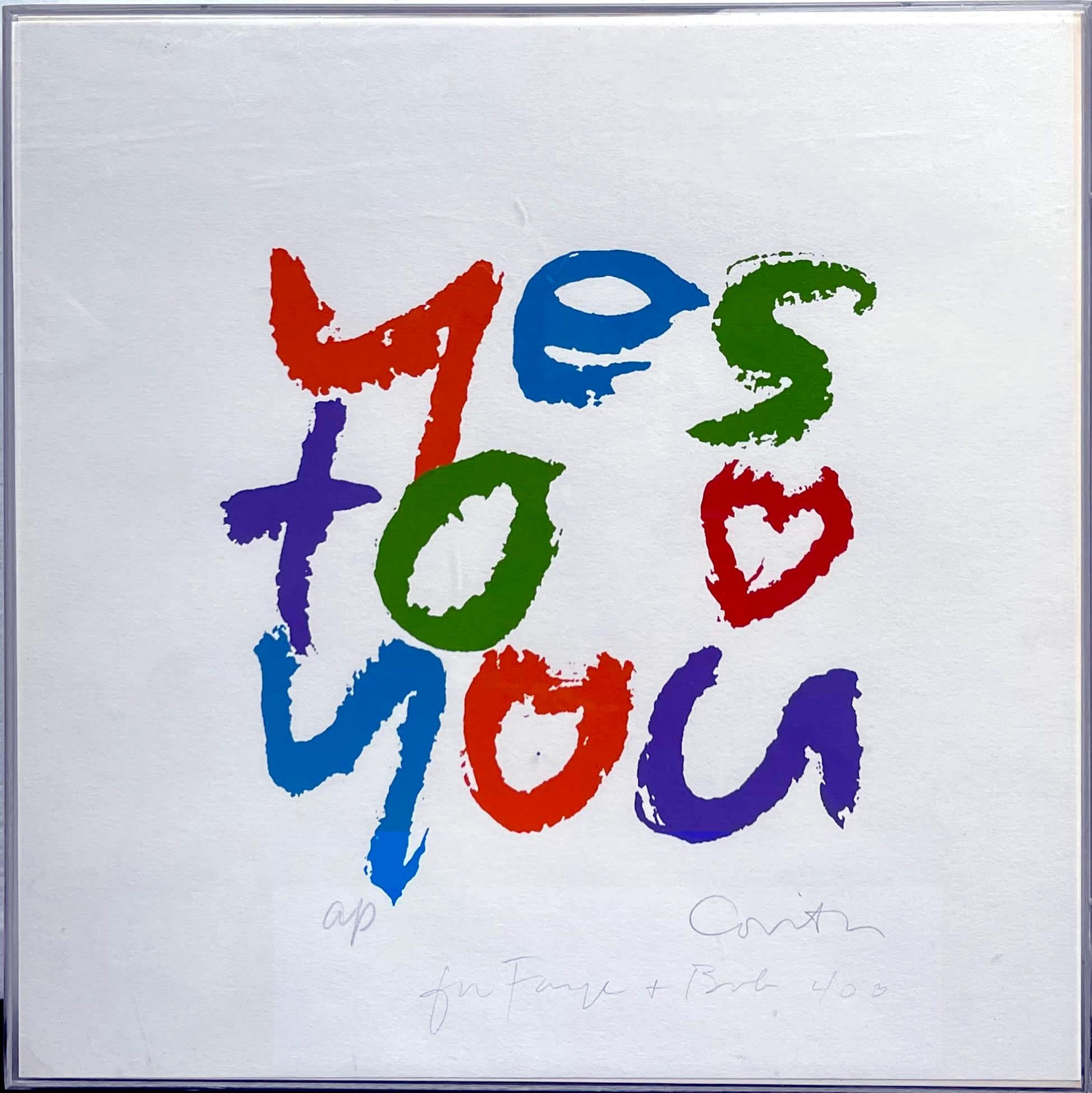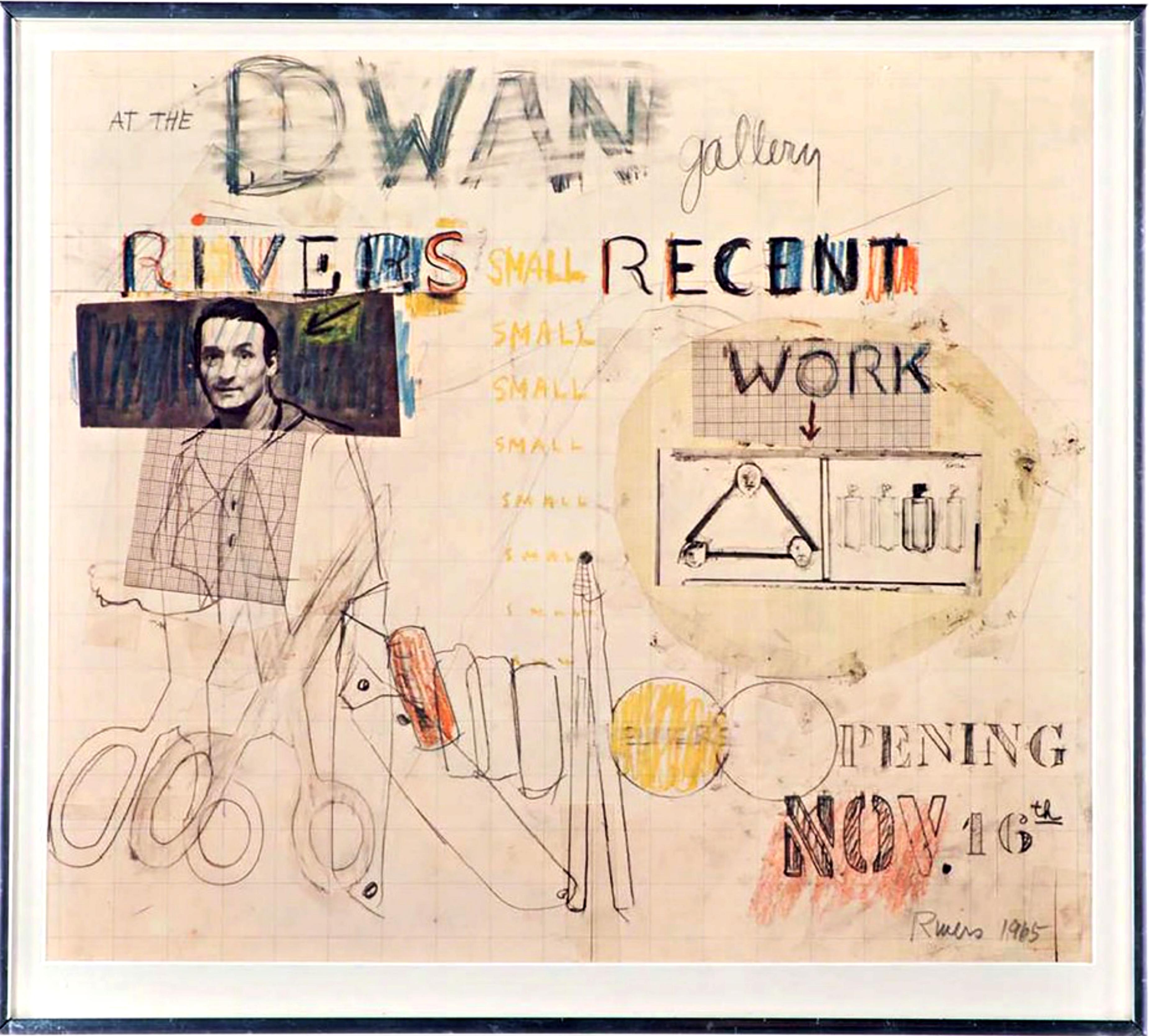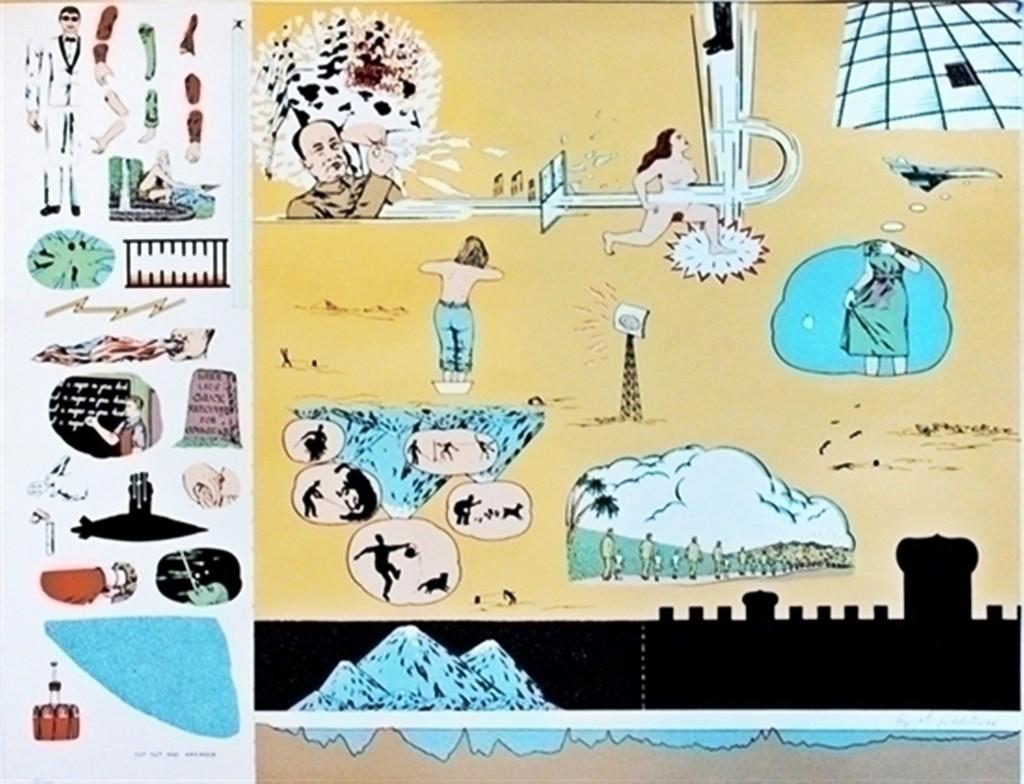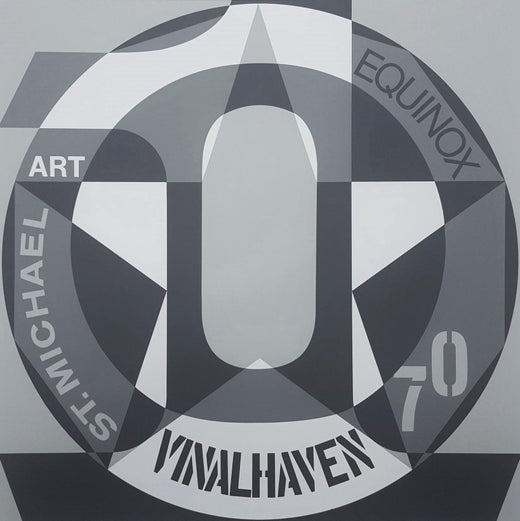Robert IndianaThe American Love (Sheehan, 76)1972
1972
About the Item
- Creator:Robert Indiana (1928 - 2018, American)
- Creation Year:1972
- Dimensions:Height: 25.5 in (64.77 cm)Width: 19.75 in (50.17 cm)
- Medium:
- Movement & Style:
- Period:
- Condition:The work is in excellent condition; there is some mounting tape at the top of the back from having previously been framed. (see photo) which will of course frame out.
- Gallery Location:New York, NY
- Reference Number:1stDibs: LU174529856712
Robert Indiana
Robert Indiana's work evolved into hard-edged graphic images of words, logos and typographic forms, earning him a reputation as one of the country's leading contemporary artists.
Indiana is known for using public signs and symbols with altered lettering to make stark and challenging visual statements. In his prints, paintings and constructions, he gave new meaning to basic words like Eat, Die and Love. Using them in bold block letters in vivid colors, he enticed his viewers to look at the commonplace from a new perspective. One indication of his success was the appearance of his immensely popular multi-colored Love on a United States postage stamp in 1973.
Find a collection of original Robert Indiana art today on 1stDibs.
- ShippingRetrieving quote...Ships From: New York, NY
- Return PolicyA return for this item may be initiated within 1 day of delivery.
- The Golden Future of America (Sheehan, 92)By Robert IndianaLocated in New York, NYRobert Indiana The Golden Future of America (Sheehan, 92), 1976 Silkscreen on Arches paper Signed and dated in pencil, lower right; numbered 13/175, in pencil, lower left. Also bears printers blind stamp Frame included: Elegantly matted and framed in a handmade wood frame On its face, this Robert Indiana's silkscreen, based upon the eponymous painting "The Golden Future of America", is a patriotic celebration of Americana, done for the country's bicentennial year. But its looks are deceptive, as the work has a far more subversive meaning. In 2014, the Art Newspaper...Category
1970s Pop Art Abstract Prints
MaterialsScreen, Pencil
- Flash portfolio colophon page, JFK Assassination (Hand signed)By Andy WarholLocated in New York, NYAndy Warhol Flash portfolio colophon pages, JFK Assassination, 1968 2 Separate Silkscreens: (1) Silkscreen text on paper and teletype text; (2) colophon sheet in pencil and numbered XVII (from the edition of 26 (roman numerals) Hand-signed by artist, two silkscreen prints; the colophon sheet is hand signed by Andy Warhol; no signature on sheet with teletype 21 1/2 × 21 1/2 inches Unframed Note: measurements are for each sheet Catalogue Raisonne Reference: FS II.32-42 (not illustrated) Silkscreened colophon sheet of the edition XVII of the iconic "Flash" Portfolio; hand signed and uniquely numbered by Andy Warhol, plus silkscreened print with teletype text. These two prints from Warhol's iconic "Flash Portfolio" were selected for inclusion in the blockbuster Andy Warhol retrospective at the Whitney Museum in 2019. (see photos). The plaque on the Whitney exhibition (also see included photo) describes the portfolio as follows:" These screenprints reflect Warhol's ongoing interest in the Kennedy assassination, an obsession that intensified following the release of the Warren Commission report and the publication of stills from a short home movie of the event, published by bystander Abraham Zapruder. Flash - November 22, 1963 is an unbound Artists Book with text based upon the original Associated Press newswire bulletins. For his illustrations, Warhol appropriated the recurring image of Kennedy from a 1960 campaign poster, and sourced the remaining photographs, including pictures of Lee Harvey Oswald and an ad for the type of rifle used, from Life's [Magazine] sustained coverage of the assassination and its aftermath.." The present sheet begins with the following teletyped text: "THE TWO WOUNDED MEN WERE RUSHED TO EMERGENCY ROOMS, AND THE HOSPITAL'S PUBLIC ADDRESS SYSTEM RANG WITH CALLS FOR ALL STAFF DOCTORS. FLASH DALLAS - TWO PRIESTS SUMMONED TO KENNEDY X IN EMERGENCY ROOM BULLETIN 3RD ADD 2ND LEAD KENNEDY XX DOCTORS TWO PRIESTS ENTERED THE EMERGENCY ROOM WHERE THE PRESIDENT WAS BEING TREATED AT 12:49 P.M. (CST). THERE WAS STILL NO OFFICIAL WORD ON THE PRESIDENT'S CONDITION. ASSISTANT WHITE HOUSE PRESS SECRETARY MALCOLM XXX KILDUFF SAID "I JUST CAN'T SAY. I JUST CAN'T SAY." FLASH -- PRIESTS SAY KENNEDY DEAD. .""" (the text on the page continues; this is just a partial excerpt.) Racolin Press, Briarcliff Manor, New York Two Andy Warhol silkscreens on white wove paper comprising the signed colophon and text pages of his iconic 1968 "Flash" Portfolio, as well as Warhol's wraparound silkscreen of the distinctive teletype text. The colophon page silkscreen is hand signed by Andy Warhol and uniquely numbered XVII in pencil from the edition of 26, which, it expressly states, was not for sale. The second silkscreen sheet features teletype print describing events surrounding the assassination of President John F. Kennedy - the defining event of a generation as contemporaneously re-imagined by the most important Pop artist of the era. Warhol created the "Flash - November 22, 1963" portfolio of prints in 1968 to depict the continuing media spectacle surrounding JFK's assassination. He named the portfolio after the news flash Teletype texts that reported the assassination and its aftermath - the first major news event played out live on TV. The Flash portfolio includes a series of eleven silkscreens depicting President Kennedy smiling broadly, a presidential seal with bullet holes through it, and other symbolic representations of that tragedy. The portfolio's cover includes an image of the New York World-Telegram front page with the headline "President Shot Dead." Warhol used screen printed...Category
1960s Pop Art Abstract Prints
MaterialsScreen, Pencil
- Yes to You, silkscreen, pencil signed Artists Proof with heart (regular ed. 200)By Corita KentLocated in New York, NYCorita Kent Yes to You, 1979 Color silkscreen Hand signed, numbered and uniquely inscribed with a heart doodle by the artist on the front. Artists Proof (aside from the regular editi...Category
1970s Pop Art Abstract Prints
MaterialsScreen, Pencil
- At The Dwan Gallery: Historic exhibition poster (Hand Signed by Larry Rivers)By Larry RiversLocated in New York, NYLarry Rivers At The Dwan Gallery: Rivers Small Recent Work (Hand Signed), 1965 Silkscreen on wove paper Hand signed and dated "Rivers, 1965" in graphite pencil lower right front Fram...Category
1960s Pop Art Abstract Prints
MaterialsScreen, Pencil
- Love Is GodBy Robert IndianaLocated in New York, NYRobert Indiana Love Is God, 2014 Silkscreen on 2 ply Rising Museum Board 32 × 32 inches Hand signed and numbered 33/50 in graphite pencil on ...Category
2010s Pop Art Abstract Prints
MaterialsBoard, Screen, Pencil
- Eddie (Sylvie's Brother) in the Desert (celebrated 1960s silkscreen) Signed/NBy Oyvind FahlstromLocated in New York, NYÖyvind Fahlström Eddie (Sylvie's Brother) in the Desert (from New York International Portfolio), 1966 Silkscreen on wove paper Pencil signed and numbered from the limited edition of ...Category
1960s Pop Art Abstract Prints
MaterialsScreen, Pencil, Graphite
- BrushstrokesBy Roy LichtensteinLocated in Miami, FLHand-signed rf Lichtenstein in pencil and numbered 245/300. Published by Leo Castelli Gallery, for the Pasadena Art Museum, California. The Prints of Roy Lichtenstein A Catalogue Rai...Category
1960s Pop Art Figurative Prints
MaterialsScreen
- HOPE (R/W/B) LARGE 4 PANEL PAINTINGBy Robert IndianaLocated in Aventura, FLOil and Silkscreen ink on triple primed canvas. Hand signed, dated, titled and inscribed "P/P" on verso by Robert Indiana. Printer's Proof edition. Total of 4 panels. Each panel ...Category
Early 2000s Pop Art Abstract Prints
MaterialsCanvas, Oil, Screen
- Large Pop Art Abstract Figure Digital Barcode Silkscreen Screenprint 80s MemphisBy David PrenticeLocated in Surfside, FLI was told this might be by another David Prentice. as I am uncertain I will add his bio. I cannot ascertain which one it is. Vintage 1981 DAVID PRENTI...Category
1980s Pop Art Figurative Prints
MaterialsScreen
- Joe Tilson British Pop Art Screenprint, Color Lithograph 4 Seasons 4 ElementsBy Joe TilsonLocated in Surfside, FLSilkscreen screenprint or Lithograph Hand signed and numbered. An esoteric, mystical, Kabbala inspired print with Hebrew as well as other languages. Joseph Charles Tilson RA (born 2...Category
1970s Pop Art Abstract Prints
MaterialsLithograph, Screen
- Judy Rifka Abstract Expressionist Contemporary Lithograph Hebrew 10 CommandmentBy Judy RifkaLocated in Surfside, FLJudy Rifka (American, b. 1945) 44/84 Lithograph on paper titled "Thou Shalt Not Bear False Witness against Thy Neighbor"; Depicting an abstract composition in blue, green, red and black tones with Hebrew script. Judaica interest. (I have seen this print described as a screenprint and as a lithograph) Hand signed in pencil and dated alongside an embossed pictorial blindstamp of a closed hand with one raised index finger. Solo Press. From The Ten Commandments Kenny Scharf; Joseph Nechvatal; Gretchen Bender; April Gornik; Robert Kushner; Nancy Spero; Vito Acconci; Jane Dickson; Judy Rifka; Richard Bosman and Lisa Liebmann. Judy Rifka (born 1945) is an American woman artist active since the 1970s as a painter and video artist. She works heavily in New York City's Tribeca and Lower East Side and has associated with movements coming out of the area in the 1970s and 1980s such as Colab and the East Village, Manhattan art scene. A video artist, book artist and abstract painter, Rifka is a multi-faceted artist who has worked in a variety of media in addition to her painting and printmaking. She was born in 1945 in New York City and studied art at Hunter College, the New York Studio School and the Skowhegan School of Painting and Sculpture in Maine. Rifka took part in the 1980 Times Square Show, (Organized by Collaborative Projects, Inc. in 1980 at what was once a massage parlor, with now-famous participants such as Jenny Holzer, Nan Goldin, Keith Haring, Kenny Scharf, Jean-Michel Basquiat, and Kiki Smith, the roster of the exhibition reads like a who’s who of the art world), two Whitney Museum Biennials (1975, 1983), Documenta 7, Just Another Asshole (1981), curated by Carlo McCormick and received the cover of Art in America in 1984 for her series, "Architecture," which employed the three-dimensional stretchers that she adopted in exhibitions dating to 1982; in a 1985 review in the New York Times, Vivien Raynor noted Rifka's shift to large paintings of the female nude, which also employed the three-dimensional stretchers. In a 1985 episode of Miami Vice, Bianca Jagger played a character attacked in front of Rifka's three-dimensional nude still-life, "Bacchanaal", which was on display at the Museum of Art Fort Lauderdale. Rene Ricard wrote about Rifka in his influential December 1987 Art Forum article about the iconic identity of artists from Van Gogh to Jean-Michel Basquiat and Keith Haring, The Radiant Child.The untitled acrylic painting on plywood, in the collection of the Honolulu Museum of Art, demonstrates the artist's use of plywood as a substrate for painting. Artist and writer Mark Bloch called her work "imaginative surfaces that support experimental laboratories for interferences in sensuous pigment." According to artist and curator Greg de la Haba, Judy Rifka's irregular polygons on plywood "are among the most important paintings of the decade". In 2013, Rifka's daily posts on Facebook garnered a large social media audience for her imaginative "selfies," erudite friendly comments, and widely attended solo and group exhibitions, Judy Rifka's pop art figuration is noted for its nervous line and frenetic pace. In the January 1998 issue of Art in America, Vincent Carducci echoed Masheck, “Rifka reworks the neo-classical and the pop, setting all sources in quotation for today’s art-world cognoscenti.” Rifka, along with artists like David Wojnarowicz, helped to take Pop sensibility into a milieu that incorporated politics and high art into Postmodernism; Robert Pincus-Witten stated in his 1988 essay, Corinthian Crackerjacks & Passing Go that "Rifka’s commitment to process and discovery, doctrine with Abstract Expressionist practice, is of paramount concern though there is nothing dogmatic or pious about Rifka’s use of method. Playful rapidity and delight in discovery is everywhere evident in her painting." In 2016, a large retrospective of Rifka's art was shown at the Jean-Paul Najar Foundation in Dubai. In 2017, Gregory de la Haba presented a Rifka retrospective at the Amstel Gallery in The Yard, a section of Manhattan described as "a labyrinth of small cubicles, conference rooms and small office spaces that are rented out to young entrepreneurs, professionals and hipsters". In 2019 her video Bubble Dancers New Space Ritual was selected for the International Istanbul Bienali. Alexandra Goldman Talks To Judy Rifka About Ionic Ironic: Mythos from the '80s at CORE:Club and the Inexistence of "Feminist Art" Whitehot Magazine of Contemporary Art. She was included in "50 Contemporary Women Artists", a book comprising a refined selection of current and impactful artists. The foreword is by Elizabeth Sackler of the Brooklyn Museum’s Sackler Center for Feminist Art. Additional names in the book include sculptor and carver Barbara Segal...Category
1980s Pop Art Abstract Prints
MaterialsLithograph, Screen
- MOONWALK 1970 Color Silkscreen Screenprint Acrylic Plexiglass Mod Space ArtBy Lowell NesbittLocated in Surfside, FLSpace Race Silkscreen on Acrylic hand signed and dated 1970, MOON WALK, color screenprint on Plexiglas depicting the moon landing, from the numbered edition of 150, size 30 x 30” Lowell Blair Nesbitt is an American painter, draughtsman, printmaker, and sculptor. Although he worked in a variety of media and covered a wide range of subjects throughout his career, he is best known for his large, Photorealist botanical paintings. Born in Baltimore, Maryland in 1933, Nesbitt earned a degree from the Tyler School of Art at Temple University. Later, he also studied at London’s Royal Academy of Arts. Working in stained glass and etching and also producing abstract paintings in his early career, a 1962 encounter with artist Robert Indiana led him to steer his aesthetic toward realism. Though he held his first solo show at the Baltimore Museum of Art in 1958, it was his 1964 debut at the Corcoran Gallery of Art in Washington D.C. that would truly bring him to the attention of the art world. In this exhibit, his botanical series of paintings, drawings, and prints captivated the art world and public alike. The game-changing Corcoran Gallery show would send his career down the trajectory of sustained success. In 1976, Nesbitt moved from his New York City West 14th Street studio to a massive space located at 389 West 12th Street. The 12,500 square foot living and workspace supplied ample room for creating his enormous paintings...Category
1970s Pop Art Abstract Prints
MaterialsPlexiglass, Screen

